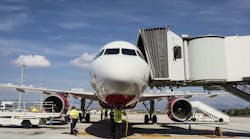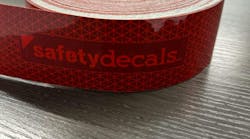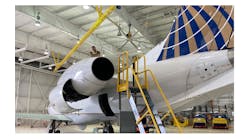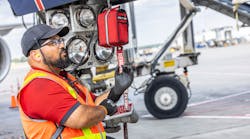The demand for air travel is on the rise which means more personnel navigating the airfield, increasing the chances for human error. Runway and ramp safety is a significant challenge and a top priority for all in the aviation industry.
In the past four years, airport marking was listed among the top three discrepancies recorded during airport inspections. Proper maintenance of all markings on the airfield is included in the certification and operations of airports (14 CFR Part 139) required by the Federal Aviation Association (FAA). The FAA also produces Advisory Circulars (ACs) that serve as informational guides to help assist all personnel in the industry with compliance and best practices for operations.
Reduce danger and improve clarity and awareness on the airfield with a breakdown of requirements and tips for proper airfield vehicle marking.
Vehicle Marking Requirements
Compliant airfield vehicle marking is crucial for safe daily operations on the airfield. Proper vehicle marking helps pilots, staff, and ATC clearly identify vehicles to prevent runway incursions.
A report by the National Highway Safety Administration (NHTSA) states that reflective tape can effectively reduce impact into trailers by 29 percent. This report led to the Federal Carrier Safety Administration (FMCSA) to require large commercial vehicles to be marked with retroreflective sheeting and conspicuity systems. This requirement also stands true to airfield vehicles and ground support equipment.
The FAA declares airport vehicle and paint markings as a safety of flight requirement and encourages airport operators to follow AC 150/5210-5D Painting, Marking, and Lighting of Vehicles Use on an Airport for best practices.
All authorized vehicles that regularly operate on the movement and safety areas of the AOA should:
- Be painted and marked with conspicuous and contrasting colors
- Display identification numbers or a company logo
- Have a flashing yellow beacon
- Be marked or flagged for high daytime visibility and nighttime operations if appropriate
Airports that do not have air traffic control facilities must provide flags for all vehicles. The flag must be at least a 3-foot by 3-foot square with a checkered pattern with international orange and white squares at least 1 foot on each side.
Vehicles that need intermittent identification can be marked with magnetically attached identification markers.
The increase in demand for quick aircraft turnaround puts added time pressure from pilots and ATC on ground personnel—this makes effective training and compliant visual marking and communication a time-saver — and a life-saver.
For more information regarding airfield vehicle marking, click here.




